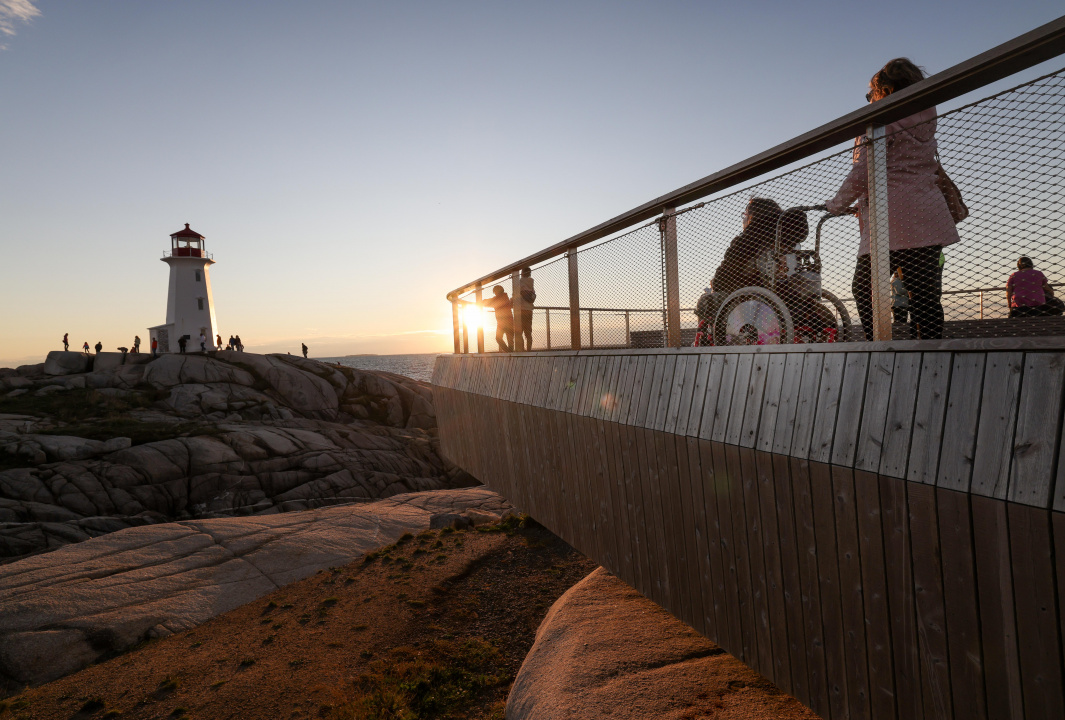Nova Scotia’s First Accessibility Standard Addresses Outdoor Spaces, Recreation Buildings

The accessible viewing platform at Peggys Cove (Province of Nova Scotia)
The Province has taken another important step on the way to an accessible Nova Scotia by 2030 – adopting the first of six accessibility standards.
The government has approved the Built Environment Accessibility Standard. It focuses on rules for outdoor and recreational spaces that will be required in the design and planning of new infrastructure starting April 1, 2026.
“Every Nova Scotian deserves equal access to buildings and outdoor spaces. This milestone is crucial in our efforts to create a more accessible province and represents a significant step toward ensuring that all Nova Scotians can participate and thrive,” said Justice Minister Becky Druhan, Minister responsible for the Accessibility Act.
The built environment includes the spaces where people live, work, learn and play across Nova Scotia. The Nova Scotia Building Code Regulations will be amended to address the accessibility of buildings. Together, the building code and the Built Environment Accessibility Standard will enable a more accessible built environment.
The standard will help ensure things like better parking options, easier access to eating areas and benches in parks, and accessible lockers and pools in new recreation facilities for people with disabilities.
In addition to the built environment, other areas with standards under development include education, employment, goods and services, public transportation and information and communication.
Quotes:
“Nova Scotia has always been an early adopter of new codes and standards. The adoption of the Built Environment Accessibility Standard is no exception and will improve accessibility for all Nova Scotians where they live, work, learn and play, now and in the future.”
— George Cotaras, President, Nova Scotia Association of Architects
Quick Facts:
- Nova Scotians have been extensively involved in developing the built environment standard and others through committees and providing input on recommendations
- raising awareness of the new built environment standard and educating people about it will continue through 2026
- almost two in five Nova Scotians over the age of 15 identify as having a disability; this number is expected to grow as the population ages
- almost 59 per cent of Nova Scotians with disabilities report experiencing barriers in the built environment
- the accessibility standards will be enacted as regulations under the Accessibility Act
Additional Resources:
The Built Environment Accessibility Standard Regulations are available at: https://novascotia.ca/accessibility/built-environment/
Accessibility Act: https://nslegislature.ca/sites/default/files/legc/statutes/accessibility.pdf
More information on accessibility standards in development is at: https://accessible.novascotia.ca/creating-accessibility-standards
Access By Design 2030, Nova Scotia’s road map for an equitable, inclusive and accessible province where everyone has opportunities to thrive: https://novascotia.ca/accessibility/access-by-design/access-by-design-2030.pdf
News release – Province to Adopt 2020 National Building Codes: https://news.novascotia.ca/en/2024/09/20/province-adopt-2020-national-building-codes